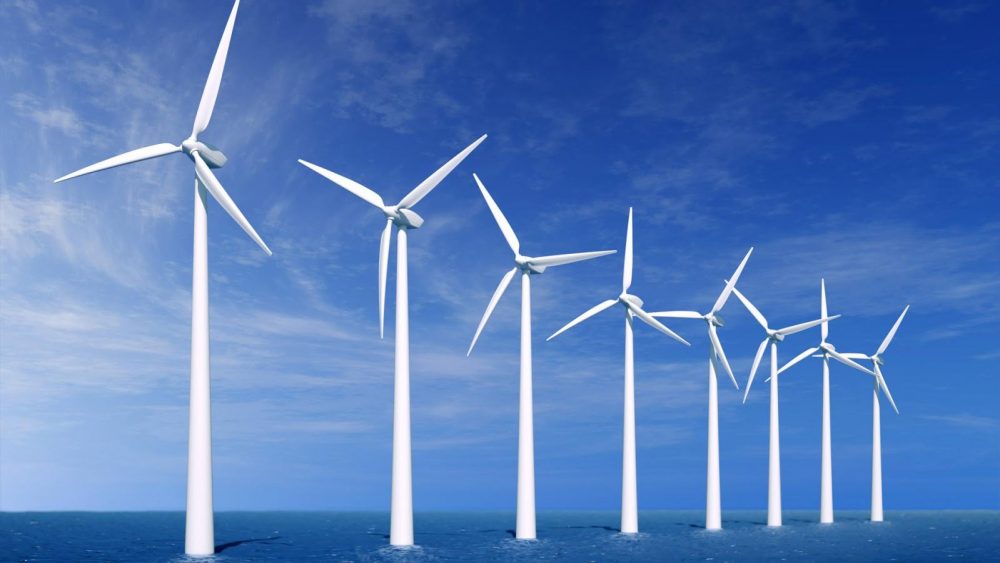Since remote epochs, the human being has taken advantage of natural resources to stock up on and to satisfy his necessities. With the increases in global population and the gradual improvements in people’s standard of living, the issue of electric energy production and the main resources this is obtained from have been motive of debate, discussion and uncertainty.
Currently the global market of energy production is mainly based on the leverage of fossil fuels like petroleum, coil and natural gas. Nevertheless, these resources, besides not being renewable and being steadily diminishing as the world population’s demand of energy increases, also are responsible of much of the carbon dioxide production and the environmental impact this has brought as result.
Then, we face a dilemma: how can we produce energy without damaging our planet, and besides produce it in an ecological way? The answer is renewable energies or clean energies or green energies. And one of the renewable resources that has raised more interest by its development and research is the wind exploitation; eolian energy is one of the pillars of the energy future, and here we will talk to you a little more about it.
Hoist your sails! A travel through the history of the energy of winds
The first known register of the wind energy usage dates back to the year 3000 b. c. e., when the ancient Egyptian civilization used the force of the wind to travel across the Nile river waters with their sailing ships. The first eolian machines dates back to VI century c. e., at the Sistan region, between Iran and Afghanistan; it is the first windmills, known as «the Persian windmills», which had a vertical axis and were used to mill grains and pump water.
Further later were introduced to Occident by crusaders and the first countries to receive them were Italy, Spain and Greece; these nations developed a different model (with an horizontal axis) that, contrary to its ancestor, offered a bigger power, since it worked continuously the current’s pressure on the blades, which used to be cross-shaped with four or eight arms. Some of these mills still exist in certain zones of the Mediterranean, like the Mykonos island, where they are used as museums or residences.
Some centuries later, Hollanders improved the mills’ design and begun to use them extensively to drain Rhine river’s swampy regions. The Danish scientist Poul la Cour designed the first electrical aerogenerator for windmills, and in the XIX century was invented a turbine for windmills capable of using 60% of the wind power to produce up to 65 kilowatts. But afterwards, with the Industrial Revolution, came the boom of fossil resources usage and electricity generation through the wind force was relegated in the industry for many years.
It was not until the 1970 decade when, due to the petroleum crisis and the growing concern for the environmental impact caused by fossil fuels, the eolian energy market was restarted. Thereafter, researches in this field have increased, allowing thus eolian technology to continuously develop and to keep doing it nowadays.
Turning air into kilowatts: the power of the eolian energy in numbers
A turbine has a little more than eight thousand parts and basically functions with air: the wind is air in movement and, therefore, possess kinetic energy; the power of this energy is received by modern wind systems’ aerogenerators, which transform eolian energy into electricity through an electrical generator that is connected to an eolian turbine.
These days, the most commercial standard aerogenerators start to generate electricity with winds that reach 3.5 meters per second, which corresponding nominal powers (maximum) go from 10 to 3000 kilowatts.
Worldwide, in 2015: was avoided the emission of over 637 million tons of carbon dioxide and 314,000 were spinning and producing electricity. Annually, in comparison with fossil sources, near to two thousand liters of water can be saved by each megawatt produced per hour. This green energy generates between 17 and 39 times the power it consumes, numbers that contrast with the 16 times of nuclear plants and the 11 times of coal plants.
For 2015, eolian energy already covered 3.7% of the global electrical energy demand, little by little it is being outlined to become a competitive energy, which pretends to reach the level of fossil energies like coal and gas. In European countries like Spain and Denmark, 30% of electricity consumption is covered by their wind farms.
«One cannot prevent the wind from blowing, but mills can be built»
Nowadays American countries like Brazil, United States, Mexico, Chile and Argentina have opted for adventuring in the implementation of wind farms. In Mexico, the Secretariat of Energy fixed the goal of reaching 35% of clean energy by 2024 and the Mexican Association of Eolian Energy points out: «In order to reach this goal, eolian technology plays a fundamental role, since in most of the countries with similar goals eolian energy has been responsible for about two thirds of the total objective». In 2009 the World Wind Energy Association gave to Mexico an acknowledgment by having the biggest growth in electricity generation capacity through wind (in terms of percentage).
On the other hand, there is a huge amount of myths that discredit the usage of this renewable energy source, like the noise pollution caused by aerogenerators or the wind farms’ latent damage for birds. These rumours have been constantly discredited by different ecological and scientific organizations, which support and emphasise the importance of its development for the future of energy production. In fact, as said by the Dutch, inhabitants of the land of tulips and windmills: «One cannot prevent the wind from blowing, but mills can be built».
From far wind farms to squares and homes
Aerogenerators have evolved apace in the past years, new designs have been created for turbines and mills, which leverage better wind strength and at the same time diminish its production costs. Besides, eolian energy microgeneration models have allowed this technology to reach homes more and more frequently, also makes possible to reduce or eliminate the dependence on conventional electrical networks; just in Spain, over ten million homes count on it.
In Iceland, the Icewind enterprise dedicates to the development and future commercialization of handmade turbines, built with highly resistant and light materials, like carbon fibre, stainless steel and aluminium. In addition to reduce the price of turbines and make possible for more people to acquire one for electrical production at their homes, they are also aimed to be more resistant against climatic adversities like snow. These turbines can resist winds of over 50 metres per second (m/s), can produce energy with low winds of 2 m/s, are noiseless, low-maintenance, do not need face wind’s direction, last up to 30 years and do not represent a danger for birds.
For its part, Altaeros Energies works on giving to rural zones a next generation infrastructure through the implementation of floating turbines that function at heights of over 200 metres, with which may be obtained a greater advantage of the winds. The objective of these turbines is to generate energy, to connect with telecommunications networks and to enable services that help agriculture with its technology. Such turbines are capable of double eolian energy production at a low cost and without the need of a constant surveillance in its logistics.
And, in attention to other kind of market, the French enterprise New Wind has experimented with the creation of the wind trees, described as «the alliance of high technology and design at service of auto-consumption». Designed to be installed at squares, parks, parking lots and other public places within cities, these electrical production systems are tree-shaped and on their green plastic leaves have embedded eolian microturbines disposed in a staggered pattern, which spin since the wind reaches 2 m/s.
So, renewable energies are very important for the future of electrical production, since they will let us contribute to cover the increase of energy demand in a way that human population and nature can coexist in harmony. The power of winds guides us to the future, and our mission is to leave port in a course for that tomorrow, making the most out of the breeze of change that science, technology and innovation blow today.
Written by Doris Salazar (Communication and Diffusion, PIT-UAS), Translated by Belem Ruiz (Edition and Communication, PIT-UAS).



 Parque Científico Tecnológico, Universidad Autónoma de Sinaloa © 2015
Parque Científico Tecnológico, Universidad Autónoma de Sinaloa © 2015